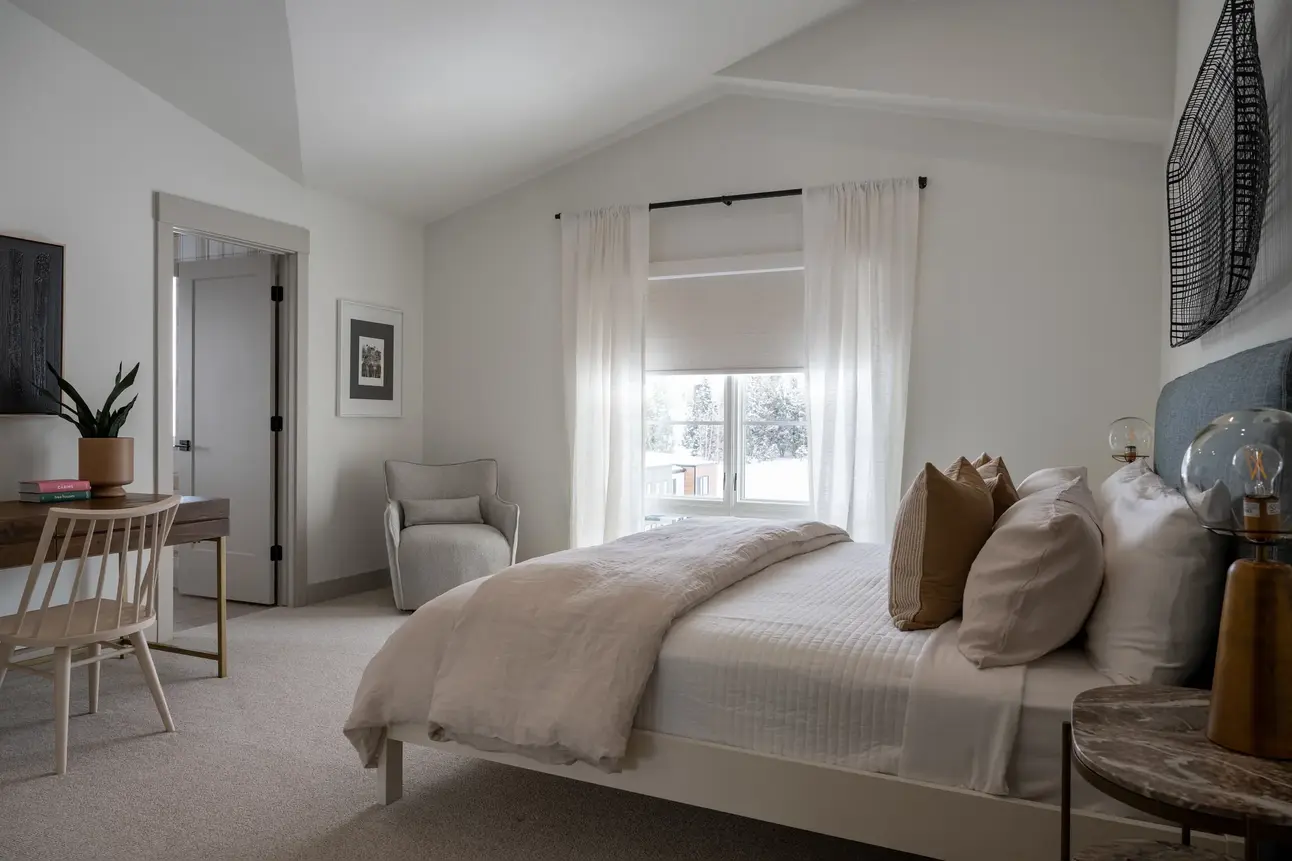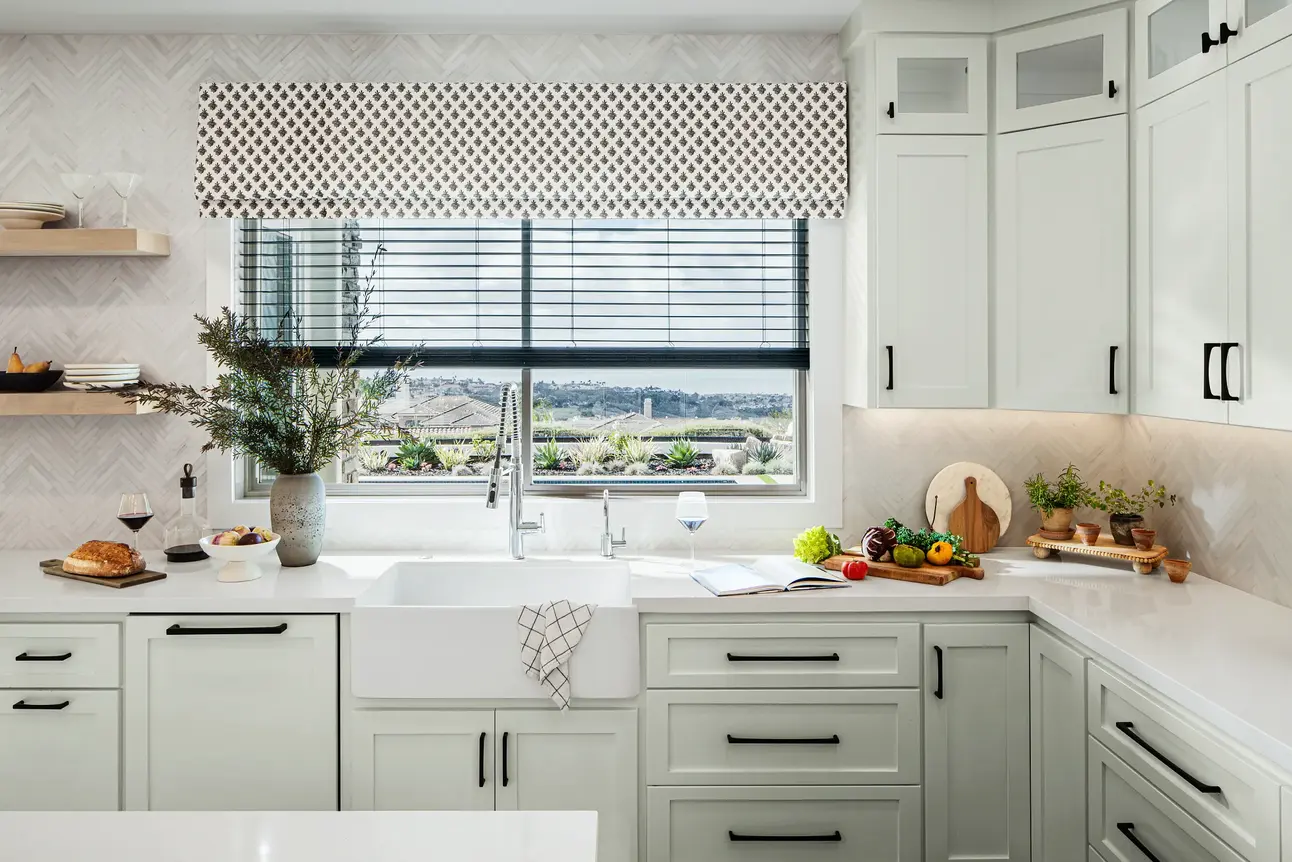Creating dependable coverage after dark starts with choosing roller shades for privacy at night that fit your home’s layout, lighting, and comfort goals. When evening light is on indoors, some fabrics can show outlines from the street. The right window treatments, precise measurement, and smart lift systems improve privacy, enhance style, and make each room feel calm and secure.
Do Roller Shades Work for Privacy at Night?
Homeowners love the clean, minimal look of Roller Shades. During the day, this design tempers light and glare while keeping a modern profile. After sunset, thin fabrics can transmit illumination, which may reveal movement. Bedrooms, bathrooms, and street-facing window openings often benefit from denser materials or blackout fabrics. A custom outside mount reduces edge gaps, increasing coverage and helping interiors feel quieter and more concealed. In many homes, these shades are the simplest path to consistent evening comfort.How Indoor Light Impacts Evening Coverage
The biggest variable at night is interior light. When lamps or overhead fixtures brighten the fabric, pale colors and open weaves appear more translucent. You can strengthen coverage by:
Choosing darker or higher density materials that glow less
Mounting outside the frame to cover more of the window
Selecting a fabric with a built in barrier or a liner
Positioning floor or table lamps away from windows
Best Types of Roller Shades for Blocking Outside Views
Different shades support different goals. Understanding how each performs at night helps you select the right balance of comfort and control. There are several types worth considering depending on the room and the brightness of nearby streetlamps.
Blackout Shades
Blackout shades reduce visible glow and silhouettes. They are ideal for bedrooms, nurseries, and media rooms where stronger evening comfort matters. Because these shades transmit very little light, they create a more uniform surface at the window and reduce the chance that movement will be noticed outside.
Light Filtering Shades
Light filtering shades soften daylight, improve ambiance, and reduce glare. At night they deliver moderate coverage only, so they suit living areas where total concealment is not essential. If you want both daytime brightness and reliable evening protection, a dual configuration pairs a daylight fabric with blackout.
Solar Shades
Solar fabrics manage glare and UV during the day while preserving outward views. After dark, they are not intended for strong coverage because interior illumination passes through the weave. Many households pair a solar fabric with drapery or a liner so the shades still look clean while coverage improves.
Dual Systems
Dual shades pair a daytime fabric with a blackout layer. One set of options manages sunshine, and the other focuses on evening seclusion. This approach gives you scheduling flexibility and helps multiple rooms share a single design language.Side-by-Side Comparison of Roller Shade Types
| Type | Nighttime Coverage | Daytime Light | View Out | Best Rooms | Notes / Options |
|---|---|---|---|---|---|
| Blackout shades | Excellent, limits silhouettes | Minimal transmission | None | Bedrooms, media rooms, nurseries | Consider outside mount, side channels, cordless, motorization |
| Light filtering shades | Moderate, shapes may show | Soft, diffused | Minimal to none | Living rooms, dining rooms, home offices | Darker colors improve coverage, can add liner |
| Solar shades | Low after dark | High, glare and UV control | Preserved in daylight | Kitchens, living spaces with strong sun | Layer with drapery or use dual system for night coverage |
| Dual shades | Excellent when blackout layer engaged | Flexible by fabric | Flexible by fabric | Mixed-use spaces, open plans | One cassette, two fabrics, schedule lowering at sunset |
Blackout Shades vs Light Filtering Options
When evening comfort is the priority, blackout shades excel. They restrict illumination and help reduce silhouettes. Light filtering alternatives are designed for daytime glow and soft diffusion. If you need both, dual systems blend the benefits, daytime brightness and nighttime coverage, without changing the style you love. In bedrooms, blackout shades usually test best for sleep and for consistent privacy.
For a detailed side-by-side breakdown of performance, fabrics, and real-world use cases, see our blackout vs light filtering roller shades guide.
Do Privacy Shades Offer Better Nighttime Coverage?
Privacy shades emphasize concealment. Many include denser weaves or laminated backings to raise night performance while keeping the front fabric aesthetic. If you love a specific texture or color, a privacy lining behind the decorative fabric can lift coverage without changing the look. Collections labeled to offer privacy typically publish transmission specs so you can compare how much light passes through.
How Roller Designs Compare to Window Blinds
Window blinds use tilting slats. While tilt improves light control by day, small openings may still show points of brightness at night. The continuous surface of window shades with low transmission reduces those points, creating uniform evening coverage. Some households layer both, blinds for daytime modulation and a low transmission shade for night, when they want flexible performance and a tailored finish at the window.
Which Rooms Need More Privacy at Night?
Not all spaces require the same level of seclusion. Focus upgrades where evening coverage matters most:
Bedrooms: Choose low transmission shades for deeper rest and fewer silhouettes.
Bathrooms: Pick moisture friendly shades with stronger coverage and easy cleaning.
Street Facing Windows: Darker or denser fabrics reduce glow visible from sidewalks.
Media Rooms: Low transmission fabrics limit reflections and keep the focus on the screen.
Home Offices: If you work late with task light, lined shades help the window read cleanly from outside.
If you cook after dark, kitchens with large windows may also benefit from denser fabrics that limit outward visibility while you enjoy task light. See our best kitchen roller shades recommendations for durable, easy-clean options.
What Opacity Levels Mean for Evening Comfort
Two attributes influence results, weave density and opacity. Denser textiles allow less brightness to pass. Opacity ratings describe how much illumination a fabric transmits. Room darkening transmits some glow. Blackout transmits very little. Pair the right rating with a tight fit for dependable coverage tailored to your needs, and consider how nearby light sources affect the window.
When Light Filtering Shades Are Not Enough
If your living space faces neighbors or a sidewalk, light filtering shades may not meet evening expectations. Consider:
Switching to a darker color within the same collection
Selecting a dual system that includes a blackout layer
Choosing an outside mount to reduce edge leaks
Moving a lamp away from the window to lower apparent glow
Small refinements can dramatically improve performance when interior light is stronger than outdoor conditions. In many cases, updating one room at a time is a practical way to test which options fit your routines.
How Window Roller Mechanisms Affect Coverage
The window roller mechanism controls how fabric lifts and lowers. Hardware does not change transmission, but it influences how precisely the shade rests at the sill or valance. Quality components help the edge sit straighter, reducing tiny gaps that can emit glow. Pair reliable hardware with a custom fit for a crisp, consistent seal. Some lines refer to specialty builds as shades roller systems, combining a designer front with a performance backer for better control of light.
Cordless and Motorization, Convenience Meets Control
Cordless lift systems create a clean look and simplify daily use, especially around kids or pets. Thoughtful motorization adds scheduled control and app integration, so shades can lower at sunset on a routine. That consistency supports privacy every evening. You can mix these options across rooms based on your habits and how bright your street is after dark.
Style and Design Without Sacrificing Coverage
You do not have to choose between performance and style. Today’s products include textures that mimic linen, sleek plains, and tactile weaves with rich depth. Explore decorative valances, hem bars, and trims to coordinate with the room. You can also layer curtains over shades to soften acoustics and add a tailored frame around the window, a design move that improves evening comfort and elevates the space.
Measuring, Mounting, and Edge Control
Accurate measurement matters. Inside mounts deliver a tailored look, while outside mounts cover more of the opening and can reduce leaks along the edges. Ask about side channel systems for bright streets or large spans. Channels create a barrier that supports blackout performance. These installation options adapt to your layout and needs. In very bright areas, test how the shades handle evening light before finalizing an order.
Including Blackout in Layered Solutions
If you prefer the daytime feel of solars or light filtering fabrics, consider including blackout in a layered plan. A dual roller, a behind the scenes backer, or complementary drapery gives you casual daytime glow and dependable night coverage without changing the front fabric style you selected. Many window treatments now offer coordinated tracks so the layers operate smoothly.
Do Any Materials Specifically Improve Privacy?
Collections marketed to improve privacy often feature tighter weaves, laminated backings, or embedded blocking layers. Labels such as low transmission or room darkening help you compare choices. Review performance specs that match your goals and test samples under real evening light to see how the window will appear from the outside.
Custom vs Ready Made, Why Fit Matters
Ready made sizes are convenient, but small gaps can reduce performance. Custom sizing helps the fabric meet the sill and cover the frame cleanly, which makes a noticeable difference after dark. Custom also opens lift options like cordless control and scheduling, plus a broader selection of window treatments, materials, colors, and styles. Many products also allow matching top treatments so multiple rooms share a cohesive look.Maintenance and Durability
Quality components keep fabric rolling smoothly and maintain edge integrity. Dust with a clean cloth or brush. Many collections allow gentle spot cleaning. With the right care, your roller system will continue to look sharp and perform well for years. If a window faces heavy traffic or dust, plan a quick monthly wipe so the shades stay crisp.
Buying Checklist, Match Coverage to Your Home
Use this list to align your purchase with real world conditions:
Room function, sleep, bathing, entertaining, media, or office
Street brightness, lamps, signage, or car headlights outside
Mount type, inside for trim look or outside to cover more of the window
Fabric choice, verify room darkening versus blackout under evening light
Lift system, cordless simplicity or thoughtful motorization
Edge control, consider side channels for high glow areas
Layering, add drapery, a dual system, or a discrete backer for flexible performance
Final Thoughts, Better Coverage After Dark
The right combination of fabric construction, fit, and lift control keeps interiors comfortable and calm at night. Whether you choose blackout shades, a dual system, or a decorative fabric with a discrete backer, a custom approach helps your window treatments perform beautifully.
Ready to explore options tailored to your needs and lifestyle? Schedule a free in home consultation to see samples, review materials, and finalize a plan that supports lasting nighttime privacy.




.png?Status=Master&sfvrsn=d5947d95_1)
.png?Status=Master&sfvrsn=4c04cf13_1)
.png?Status=Master&sfvrsn=837b23bd_1)
.png?Status=Master&sfvrsn=f55daebb_1)


